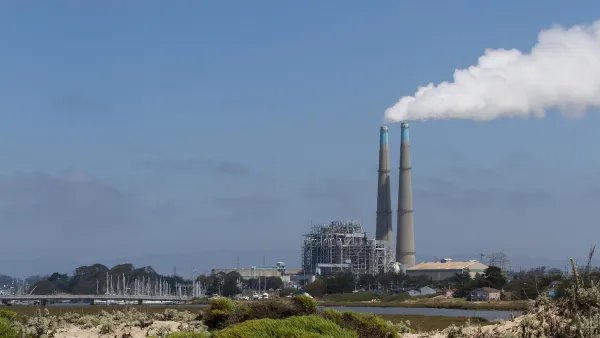An Ohio utility is switching to coal due to the rising price of natural gas, illustrating how sensitive fuel prices are to utilities. However, when it comes to building new plants - natural gas has the advantage due to coal's higher capital costs.
Dan Gearino writes how American Electric Power, "one of the largest users of coal in the country", has reversed the percentages of coal and natural gas it burns to create electricty from only a year ago.
Right now, the company’s coal plants are operating at about a 65 percent “capacity factor,” which refers to how much energy was generated compared with the maximum possible; AEP’s natural-gas plants are operating at about half that level, which is almost a complete reversal from last year at this time, said Nick Akins, the president and CEO, in an interview.
While the price of natural gas is still relatively low at about $4 per 1,000 cubic feet in March, it has doubled within only a month's time.
Now, the price exceeds a level at which “you’ll see the pendulum swing back toward coal-fired generation,” Akins said.
The whole electricity-utility sector is going through some version of this process, trying to figure out which fuel will have the lowest cost today and in the near future, said Kenneth B. Medlock III, an economist at Rice University in Houston. [See Energy Information Administration webpage: APRIL 11, 2013 "Year-to-date natural gas use for electric power generation is down from 2012"]
Akins expects natural gas to remain below $7 per 1,000 cubic feet for the next decade, and even at that higher cost, he expects those plants to be less expensive to build than coal plants.
However, price is not the only consideration for utilities in deciding which fuel to burn. Kate Linthicum of the Los Angeles Times writes about the planned conversion of the huge Intermountain Power Project in Delta, Utah, "the biggest supplier of electricity for Los Angeles", to natural gas from coal. The conversion will cost Los Angeles $650 million and take more than 10 years to complete. However, the city council, which approved the decision on April 23, felt the need to produce cleaner energy and reduce climate-changing emissions, which apparently was not a consideration with the aforementioned AEP decision.
In addition, California law prohibits entitities from signing new contracts to buy power from conventional coal power plants. The Intermountain Power Project contract expires in 2027.
FULL STORY: With natural gas costly, AEP burning more coal

Analysis: Cybertruck Fatality Rate Far Exceeds That of Ford Pinto
The Tesla Cybertruck was recalled seven times last year.

National Parks Layoffs Will Cause Communities to Lose Billions
Thousands of essential park workers were laid off this week, just before the busy spring break season.

Retro-silient?: America’s First “Eco-burb,” The Woodlands Turns 50
A master-planned community north of Houston offers lessons on green infrastructure and resilient design, but falls short of its founder’s lofty affordability and walkability goals.

Test News Post 1
This is a summary

Analysis: Cybertruck Fatality Rate Far Exceeds That of Ford Pinto
The Tesla Cybertruck was recalled seven times last year.

Test News Headline 46
Test for the image on the front page.
Urban Design for Planners 1: Software Tools
This six-course series explores essential urban design concepts using open source software and equips planners with the tools they need to participate fully in the urban design process.
Planning for Universal Design
Learn the tools for implementing Universal Design in planning regulations.
EMC Planning Group, Inc.
Planetizen
Planetizen
Mpact (formerly Rail~Volution)
Great Falls Development Authority, Inc.
HUDs Office of Policy Development and Research
NYU Wagner Graduate School of Public Service




























